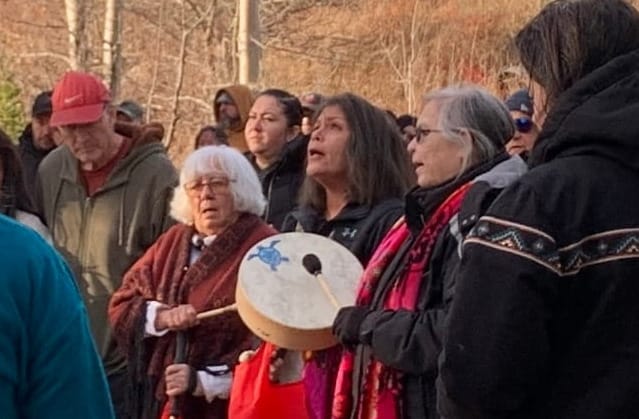Maine AIRS brings newspaper stories to vision-impaired
John Steadman, a resident of Robbinston who gradually began to lose his vision as he grew older, has been listening to an audio broadcast program of local, regional and statewide newspaper articles through Maine AIRS for two years now. "As long as it's on the air, it's on in the house," he says.
John Steadman, a resident of Robbinston who gradually began to lose his vision as he grew older, has been listening to an audio broadcast program of local, regional and statewide newspaper articles through Maine AIRS for two years now. "As long as it's on the air, it's on in the house," he says.
Maine AIRS is a program of the Iris Network, a statewide nonprofit organization that serves the vision‑impaired and print‑disabled with a number of services. Steadman remembers how he felt when he had to stop reading newspapers. "I used to read the paper with a magnifier, but it was too eye straining, so I was going to have to give it up." A friend told him about Maine AIRS. "It's a very good program," he says.
Maine AIRS provides a format for the vision impaired and print disabled to hear the news from newspapers, whether it is about a sale at the grocery store, the obituaries, candidate interviews or analysis of local and statewide issues. For those who have lost their vision or who have a disability such as tremors that prevents them from reading the paper, Maine AIRS provides an essential service. Iris Network Executive Director Jim Phipps explains by saying, "Access to the local community paper is a tool to active community involvement. Finding out what's happening with the school board, selectmen, sports scores and others, these are vital pieces of information in order for people to play a part in their communities."
The audio broadcast program is directed by Les Meyers out of Brewer, where volunteers gather to read from a wide assortment of newspapers, including The Quoddy Tides. "We've got to be so gracious to all the volunteer readers and to Les Meyers for all that they do each day for us," Steadman says. There is an option for volunteers in the county who do not want to drive to Brewer on a regular basis C they can read into a digital recorder and upload the recording to the Maine AIRS website. "There are a lot of local publications that we're interested in broadcasting. We're open to suggestions," says Phipps.
Currently a client receives a special receiver from the network that picks up the digital broadcast found on a sub‑carrier of Maine Public Radio, but the program reach of Maine AIRS is poised for expansion. Michael Barndollar, director of development at the Iris Network, explains that when Maine Public Broadcasting Network converted to a digital signal, it created some difficulties with broadcast reception. The organization is working to "increase access through the computer, radio, cable television. If you factor in all the print disabled people in the state, hundreds of thousands of people could be benefiting from Maine AIRS."
Barndollar gives an example of a nursing home in Massachusetts that connected to a similar audio broadcast program through its internal communications system. He suggests that this is just one of many ways that Maine AIRS could be brought to a wide range of people no longer able to read.
Along with increasing broadcast range, Phipps notes, "The programming will expand significantly while still retaining its broadcasting core of local news." A new component will be added. Clients, he says, will be able to use additional Iris Network services to help them use the Internet to access audio information. "Those who lose their vision, there are techniques available to access the Internet without necessarily seeing the screen." The Internet will be used as a tool to allow clients to peruse audio archives any time during the week of the issue's publication rather than only having access to the news as its broadcast according to schedule.
The expansion plans will include changes to the organization's website for ease of accessibility. Training for clients will be available through the vision rehabilitation therapist branch of the Iris Network. Linda Hunt serves Washington County and visits potential and existing clients for assessments. According to Phipps, Hunt will also provide Internet and Maine AIRS information and show clients what tools are available to them. Phipps says, "Sometimes those with vision loss withdraw from life." But, he says, "There are other ways to thread a needle besides looking at it."
Steadman couldn't agree more. He has gotten the service for a few people in area nursing homes but wishes that more knew about it. "I thought of all those other people, who as they get older can't see to read anymore. They go into a nursing home, family can't always visit, staff doesn't have time to read." For those who connect to Maine AIRS, Steadman notes, "It keeps their minds working. One woman listens to her radio every single day." He's happy to help anyone who wants to know more about Maine AIRS and his experience with it. "Gladly," he says, and suggests calling him at home at 454‑0257.
The Iris Network can be reached at 774‑6273. Information about the network and Maine AIRS may be found at <www.theiris.org>. Those who are interested in volunteering as readers for Maine AIRS should contact Les Meyers at 989‑0058.

